You are using an out of date browser. It may not display this or other websites correctly.
You should upgrade or use an alternative browser.
You should upgrade or use an alternative browser.
Glen
Moderator

Blacks in the United States of America had been free since before the beginning of the 19th century. The heaviest concentration of blacks in the USA remained in the State of Virginia, though not as much as during the colonial era. In Virginia, a fairly strict division remained between black and white, with most blacks staying tied to the soil, though there was a modestly sized but prosperous black middle class, those engaged in a number of trades, and many of whom served their black brethren in this capacity. More ambitious members of the USA's black populace often filtered out of Virginia, either to US cities along the great transport routes, or out west to establish homesteads of their own. Most of these adventurous blacks (including many famed Westerners), far from the older ways of Virginia, were seen more as exotic than a threat to the white establishment of the USA in the various states and territories.
Viriginia during the first third of the 19th century remained stable in her black population in part due to the infusion of runaway slaves from British Southern America prior to the Slaver Uprising. Southerner blacks (often referred to as Negros, in part due to the Spanish influences in the South) were often drawn to Virginia with its relatively large black population and at least superficial cultural similarities to British Southern America. While blacks in Viriginia were often helpful initially to these escapees from servitude, they also often held a superior attitude towards Southerner blacks, which led many former slaves to leave Virginia for other regions of the USA. In the years after the Slaver Uprising and the British Empire's abolition of slavery, a significant proportion of runaway slaves returned to the South, to reunite with families and friends, as well as to return to more familiar surroundings.
A minor but secondary influx of Southern blacks (Negros) into the USA would occur with the rise in popularity of Southerner music, much of it pioneered by the black and mulatto population of the DSA. Black and mulatto entertainers would come north for the money to be had for their performances.
It should also be noted that black enclaves indigenous to the original colonies also existed, though the Southern drawl was often associated with blacks.
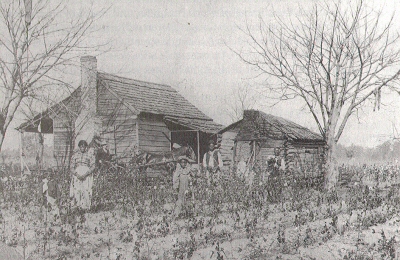

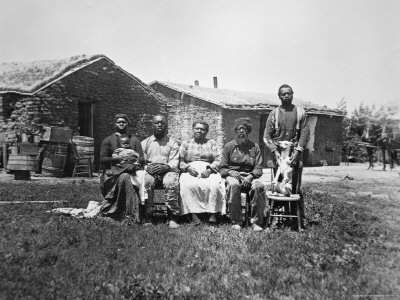
Why has it been Butterflied -- The Statue was a 1870's gift -- And this is still the 50's~60's.Which brings up another interesting idea: since the Statue of Liberty has been butterflied away, why not have the British give the USA something similar to celebrate the bicentennial? Then later on, the USA gives the DSA something similar?
Remembre the OTL Statue is just One of many proposed designs.
Good stuff as usual! Still waiting on the appearance of a Parrish... (unless I missed it in a caffeine stupor...) 
Keep up the excellent work.
Keep up the excellent work.
Glen
Moderator
Why has it been Butterflied -- The Statue was a 1870's gift -- And this is still the 50's~60's.
Remembre the OTL Statue is just One of many proposed designs.
POD was in 1760s. I think it is safe to say that the OTL Statue of Liberty has been butterflied away.
Awesome post! Good to know the USA treats balcks far better, and the divide between them and thier 'Negro' brethren is an interesting and plossible twist. Any shot of major Black settlement in the West?
Glen,
I think you'll have to deal with a strange tension with blacks in the USA. Honestly, I'd wonder if they'd maintain themselves as a distinct culture (or even race) at all ITTL outside of Virginia and Maryland).
Basically, it seems that racism was needed to enforce the strict color line of OTL's USA, and in order to maintain racism there had to be a large enough proportion of blacks that they were not merely a curiosity, but an active threat. European nations like Spain, Portugal, and Britain, for example, had a goodly amount of black slaves at one point, but as they were manumitted they just melted into the main white population. The same thing seems to have happened in parts of Latin America where there weren't large black populations, like Argentina and Mexico.
In addition, I think in order to distinguish themselves from Negroes, American blacks, particularly middle class and urban ones, will want to acculturate as much to the dominant white paradigm as possible. While I don't think that would immediately mean most of them would want a white spouse, it would probably be a different story for their children and grandchildren who grow up socializing with lots of white families.
I suspect it will highly vary depending upon geography however. On the frontier, I expect the black population will largely vanish. But in major cities like New York and Philadelphia, I expect enough of a black population will form that there will be a strong feeling of ethnic rivalry, even if not the pernicious racism of OTL, which will cause people to largely stick to their own.
I think you'll have to deal with a strange tension with blacks in the USA. Honestly, I'd wonder if they'd maintain themselves as a distinct culture (or even race) at all ITTL outside of Virginia and Maryland).
Basically, it seems that racism was needed to enforce the strict color line of OTL's USA, and in order to maintain racism there had to be a large enough proportion of blacks that they were not merely a curiosity, but an active threat. European nations like Spain, Portugal, and Britain, for example, had a goodly amount of black slaves at one point, but as they were manumitted they just melted into the main white population. The same thing seems to have happened in parts of Latin America where there weren't large black populations, like Argentina and Mexico.
In addition, I think in order to distinguish themselves from Negroes, American blacks, particularly middle class and urban ones, will want to acculturate as much to the dominant white paradigm as possible. While I don't think that would immediately mean most of them would want a white spouse, it would probably be a different story for their children and grandchildren who grow up socializing with lots of white families.
I suspect it will highly vary depending upon geography however. On the frontier, I expect the black population will largely vanish. But in major cities like New York and Philadelphia, I expect enough of a black population will form that there will be a strong feeling of ethnic rivalry, even if not the pernicious racism of OTL, which will cause people to largely stick to their own.
Glen
Moderator
Good stuff as usual! Still waiting on the appearance of a Parrish... (unless I missed it in a caffeine stupor...)
Keep up the excellent work.
Will keep it in mind.
Glen
Moderator
Awesome post!
Thank you.
Good to know the USA treats blacks far better, and the divide between them and their 'Negro' brethren is an interesting and plossible twist.
I am glad you find it so.
Any shot of major Black settlement in the West?
Depends.
Glen
Moderator
Glen,
I think you'll have to deal with a strange tension with blacks in the USA. Honestly, I'd wonder if they'd maintain themselves as a distinct culture (or even race) at all ITTL outside of Virginia and Maryland).
Basically, it seems that racism was needed to enforce the strict color line of OTL's USA, and in order to maintain racism there had to be a large enough proportion of blacks that they were not merely a curiosity, but an active threat. European nations like Spain, Portugal, and Britain, for example, had a goodly amount of black slaves at one point, but as they were manumitted they just melted into the main white population. The same thing seems to have happened in parts of Latin America where there weren't large black populations, like Argentina and Mexico.
In addition, I think in order to distinguish themselves from Negroes, American blacks, particularly middle class and urban ones, will want to acculturate as much to the dominant white paradigm as possible. While I don't think that would immediately mean most of them would want a white spouse, it would probably be a different story for their children and grandchildren who grow up socializing with lots of white families.
I suspect it will highly vary depending upon geography however. On the frontier, I expect the black population will largely vanish. But in major cities like New York and Philadelphia, I expect enough of a black population will form that there will be a strong feeling of ethnic rivalry, even if not the pernicious racism of OTL, which will cause people to largely stick to their own.
Your points here are well taken - on the other hand, did blacks disappear entirely in Canada?
Glen
Moderator
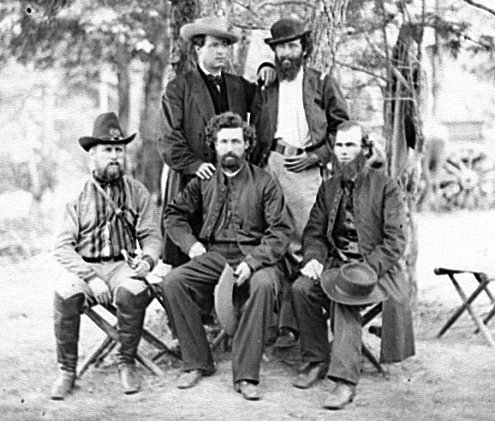
Most of the Protestant Irish in the USA eventually blended with other Protestant Americans, in British Southern America (and subsequently the Dominion of Southern America) the Protestant Irish were proud of their heritage and tended to remain apart in some ways from the rest of the populace (though oddly, had a high rate of intermarriage with the Civilized Tribes). Orange Marches and Societies became rather popular in the post-war Dominion of Southern America as a way for this population to show their distinctness but also loyalty to the Crown.
On the other hand, many Irish Nationalist expatriots found their way to the USA, and a series of hit and run raids across the border into the Dominion threatened relations between the two nations in the 1850s. However, join efforts between the Rangers of the Dominion and the Legion of the US were able to put a halt to these actions.

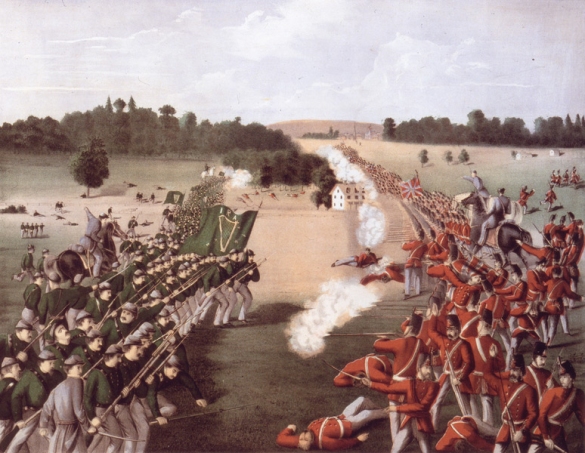
Your points here are well taken - on the other hand, did blacks disappear entirely in Canada?
I see your point, but the black community in Canada wasn't that much of an outlier. Most of the present community are recent immigrants from the Caribbean. The fraction descended from black loyalists, the slaves of white loyalists, or runaway slaves/American freemen really stuck to two areas - Toronto and Halifax, where they were present enough to form a discrete black community and experience some measure of racism (Nova Scotia actually had the first race riot in North America)
Out of curiosity, has a national flag for the DSA been designed or proposed yet?
In any case, here's a simple flag I made in a couple of minutes for the province of Georgia. Admittedly, it probably needs much more work to better represent TTL's Georgia, but I hope it's an okay start.

In any case, here's a simple flag I made in a couple of minutes for the province of Georgia. Admittedly, it probably needs much more work to better represent TTL's Georgia, but I hope it's an okay start.
Glen
Moderator
Hoorah! The sons of Hibernia have started coming to the west!
Well, been worth doing for a while now, but always worth revisiting and advancing.
Glen
Moderator
I see your point, but the black community in Canada wasn't that much of an outlier. Most of the present community are recent immigrants from the Caribbean. The fraction descended from black loyalists, the slaves of white loyalists, or runaway slaves/American freemen really stuck to two areas - Toronto and Halifax, where they were present enough to form a discrete black community and experience some measure of racism (Nova Scotia actually had the first race riot in North America)
I think you might see a similar situation in most of the USA, though perhaps a little more defined in Virginia.
Glen
Moderator
Out of curiosity, has a national flag for the DSA been designed or proposed yet?
In any case, here's a simple flag I made in a couple of minutes for the province of Georgia. Admittedly, it probably needs much more work to better represent TTL's Georgia, but I hope it's an okay start.
The DSA doesn't have a separate flag yet.
The DSA doesn't have a separate flag yet.
Will it be something like Canada's? two colors and a simple design in the middle. Or like Australia's and New Zealand's keeping the Union Jack?
Glen
Moderator
Will it be something like Canada's? two colors and a simple design in the middle. Or like Australia's and New Zealand's keeping the Union Jack?
well....initially at least I'm thinking like Down Under. Later, who knows?
Glen
Moderator

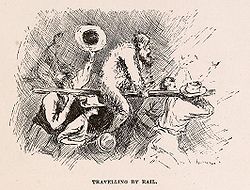
Share: